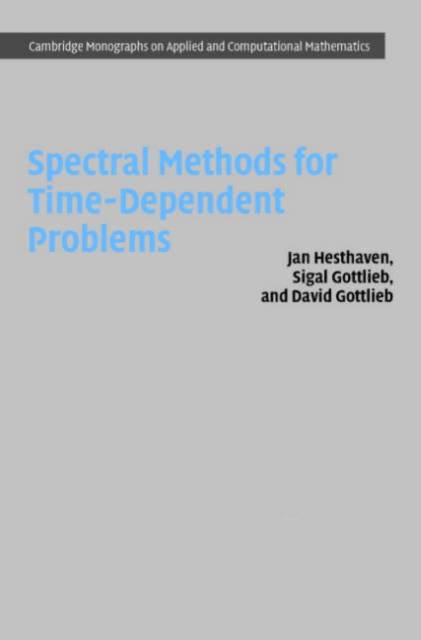
- Afhalen na 1 uur in een winkel met voorraad
- Gratis thuislevering in België vanaf € 30
- Ruim aanbod met 7 miljoen producten
- Afhalen na 1 uur in een winkel met voorraad
- Gratis thuislevering in België vanaf € 30
- Ruim aanbod met 7 miljoen producten
Zoeken
€ 187,45
+ 374 punten
Omschrijving
Spectral methods are well-suited to solve problems modeled by time-dependent partial differential equations: they are fast, efficient and accurate and widely used by mathematicians and practitioners. This class-tested 2007 introduction, the first on the subject, is ideal for graduate courses, or self-study. The authors describe the basic theory of spectral methods, allowing the reader to understand the techniques through numerous examples as well as more rigorous developments. They provide a detailed treatment of methods based on Fourier expansions and orthogonal polynomials (including discussions of stability, boundary conditions, filtering, and the extension from the linear to the nonlinear situation). Computational solution techniques for integration in time are dealt with by Runge-Kutta type methods. Several chapters are devoted to material not previously covered in book form, including stability theory for polynomial methods, techniques for problems with discontinuous solutions, round-off errors and the formulation of spectral methods on general grids. These will be especially helpful for practitioners.
Specificaties
Betrokkenen
- Auteur(s):
- Uitgeverij:
Inhoud
- Aantal bladzijden:
- 284
- Taal:
- Engels
- Reeks:
- Reeksnummer:
- nr. 21
Eigenschappen
- Productcode (EAN):
- 9780521792110
- Verschijningsdatum:
- 11/01/2007
- Uitvoering:
- Hardcover
- Formaat:
- Ongenaaid / garenloos gebonden
- Afmetingen:
- 155 mm x 229 mm
- Gewicht:
- 566 g

Alleen bij Standaard Boekhandel
+ 374 punten op je klantenkaart van Standaard Boekhandel
Beoordelingen
We publiceren alleen reviews die voldoen aan de voorwaarden voor reviews. Bekijk onze voorwaarden voor reviews.








